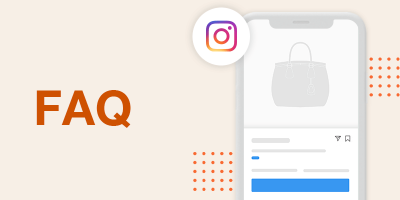Meta has begun phasing out native checkout on Facebook and Instagram. As of June 2025, Shops are gradually shifting to website checkout, with most expected to complete the transition by August 2025.
This means customers will only complete purchases on a seller’s own website.
In addition, Meta will no longer support order management, post-purchase experiences, or dispute resolution within Facebook or Instagram.
Keep reading for more details about what’s changing, which metrics are affected, and what sellers need to do to prepare for the shift to website checkout.
Ads and reporting updates
As checkout moves off-platform, Meta is adjusting how Shops ads work and what metrics are available:
Conversion location
Definition: This setting determines where Meta sends users who click on your ads—either your shop on Meta or your own website.
- Meta is retiring the hybrid “Website and shop” conversion location.
- Moving forward, “Website” will be the only supported option.
- To allow Meta to still optimize destination based on conversion likelihood, enable “Use shop to personalize buyer journey.”
Conversion events
Definition: These are the specific user actions that Meta tracks and uses to optimize ad delivery.
Only “Purchase” will remain available. The following events will no longer be trackable:
- View Content – when a user views a product page.
- Add to Cart – when a user adds a product to their cart.
- Initiate Checkout – when a user begins the checkout process.
Deprecated metrics
Definition: These are metrics tied to Meta’s native checkout process, which will no longer be collected once shops switch to website checkout.
These metrics will be retired:
- Meta purchases – Number of purchases completed through Facebook or Instagram’s checkout.
- Meta checkouts initiated – Number of users who began an in-app checkout.
- Meta purchase conversion value – Total value of those Meta-based purchases.
Historical data may still appear in reports, but these figures will no longer update after your shop transitions.
In summary, make the following adjustments to your reporting:
- Update ad campaigns to use “Website” as the conversion location.
- Enable “Use shop to personalize buyer journey” to allow flexible destination routing.
- Connect third-party analytics (e.g., Google Analytics) and validate your Meta Pixel implementation to track conversions on your website.
What sellers need to do to keep Shops running smoothly
If your shop has been updated (or will be soon), take the following steps:
- Add a checkout URL to product listings (not required for Shopify users).
- Update shipping profiles and catalog structure to reflect website-driven fulfillment.
- Validate product variants across your site and Meta catalog.
- Merge catalogs if you use Advantage+ catalog ads.
- Monitor UTM tracking and feed structure to preserve performance attribution.
Note: Sellers using Magento, Adobe Commerce Cloud, or other third-party OMS will migrate later. Shopify sellers will retain shop visibility but complete fulfillment via Shopify.
Final thoughts
This update empowers merchants to control checkout, but it also shifts full accountability to your ecommerce site.
Tips for optimizing your on-site checkout:
- Minimize steps: 2–3 page flows convert best.
- Support fast, familiar payment options (e.g., Apple Pay, Shop Pay, PayPal).
- Enable guest checkout to reduce friction.
- Use trust signals (SSL, reviews, satisfaction guarantees).
- Test mobile experience and page load speed regularly.
For more guidance regarding these changes, visit Meta’s Business Help Center article.
Need support updating your feed structure and analytics for Meta’s new requirements? Feedonomics can ensure your product data, variants, and meta fields are fully aligned—so you can maintain performance while owning the customer experience.

Mario is a senior content marketing manager based in Texas. He enjoys solving problems, learning about new ecommerce tech, and breaking down complex topics into useful tips for readers.

